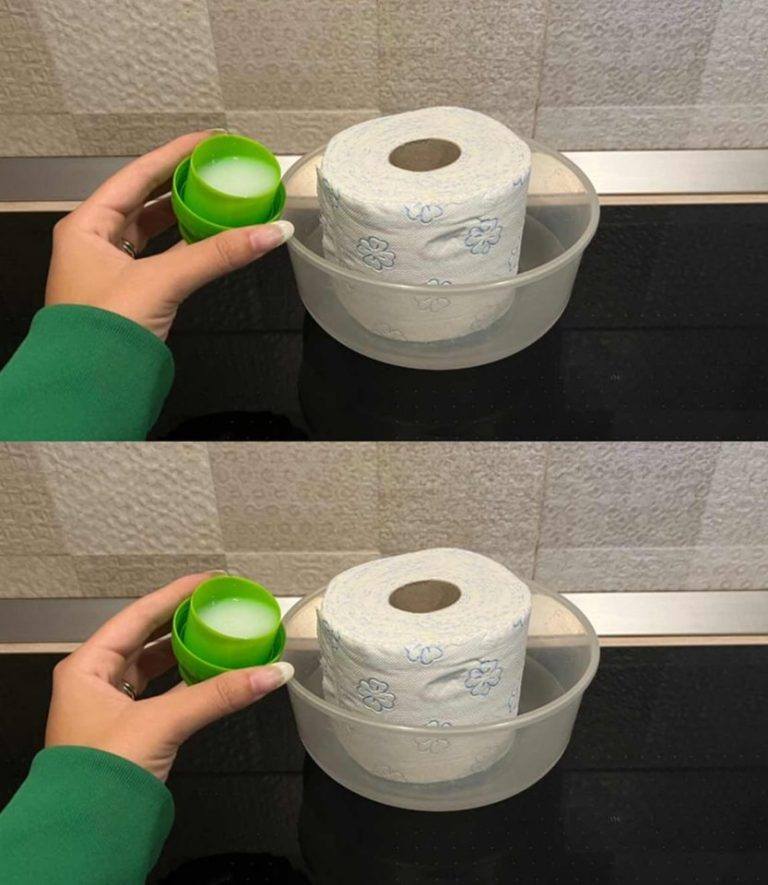ADVERTISEMENT
### The Risks of Using Fabric Softener on Toilet Paper
While the benefits may seem enticing, it’s important to consider the potential risks and drawbacks of using fabric softener on toilet paper. Although the idea of adding fabric softener is creative and has certain advantages, there are some issues to keep in mind:
1. **Clogging the Plumbing**
Toilet paper is designed to break down easily in water to prevent clogs in plumbing systems. When fabric softener is applied to toilet paper, it may coat the fibers in a way that could make the paper less biodegradable or slower to break down. This can potentially lead to clogged pipes or septic system issues, especially in older plumbing systems or systems that are more sensitive to the breakdown of materials.
2. **Skin Sensitivity and Allergies**
Although fabric softeners are designed to soften materials, they also contain various chemicals, fragrances, and preservatives that might cause irritation to sensitive skin. While this is less of a concern when using the product on clothing or towels, when applied directly to sensitive areas of the body, these chemicals could lead to allergic reactions, itching, or rashes. Individuals with very sensitive skin or those prone to skin conditions may want to avoid this practice to prevent unnecessary discomfort.
3. **Increased Cost**
Fabric softeners, particularly the higher-end varieties, can be expensive. If you find yourself adding fabric softener to every roll of toilet paper you use, the costs can add up over time. For households that already use fabric softeners for their laundry, this expense might not be significant, but for others, it could be an unnecessary additional cost.
4. **Environmental Impact of Chemicals**
While some fabric softeners are marketed as eco-friendly, many still contain chemicals that can be harmful to the environment. These chemicals can find their way into wastewater systems, affecting local ecosystems. If you’re someone who is concerned about the environmental impact of your products, this may be a deal-breaker when considering fabric softener for toilet paper.
### Alternatives to Fabric Softener for Toilet Paper
If the idea of using fabric softener on toilet paper doesn’t seem right for you, there are alternatives that can achieve similar benefits without the potential risks:
1. **Buying Softer Toilet Paper**
The simplest alternative is to purchase high-quality, softer toilet paper. Many brands on the market today offer ultra-soft options that are designed with sensitive skin in mind. Some even have lotions or aloe vera built into the paper for added comfort. By selecting a premium brand, you can achieve the same softness and comfort without resorting to fabric softener.
2. **Use of Wet Wipes**
For those seeking the ultimate in comfort, wet wipes can provide a smoother, gentler experience than traditional dry toilet paper. However, it’s essential to look for biodegradable options to reduce environmental impact. These wipes can often feel more like fabric than paper, offering a luxurious and refreshing alternative. However, it’s important to remember that wet wipes are not suitable for plumbing systems, as they can cause blockages and should be disposed of properly.
3. **DIY Softening Solutions**
If you’re looking for a more natural approach, you can create your own fabric softener using simple ingredients like baking soda, vinegar, and essential oils. This way, you can control the ingredients and avoid unnecessary chemicals that may irritate your skin. Some people also make their own wet wipes or dampen toilet paper with a mild, natural solution before use to improve comfort.
### Conclusion
The idea of putting fabric softener in toilet paper is certainly unconventional, but it’s not without its merits. The increased softness, reduced friction, pleasant scent, and potential absorbency benefits are compelling reasons why some people have turned to this practice. However, there are some risks to consider, including clogged plumbing, skin sensitivity, and environmental concerns.
Before deciding whether this method is right for you, it’s important to weigh the pros and cons and consider the alternatives. Whether you choose to embrace the fabric softener trend or opt for a softer toilet paper brand, the ultimate goal is to enhance comfort and hygiene in your bathroom routine.
In the end, the key is finding what works best for your lifestyle, preferences, and the well-being of your skin and plumbing. Who knows? For some, fabric softener in toilet paper might just be a brilliant solution to elevate an everyday necessity.
